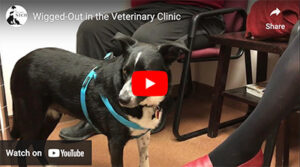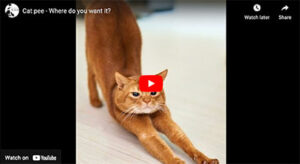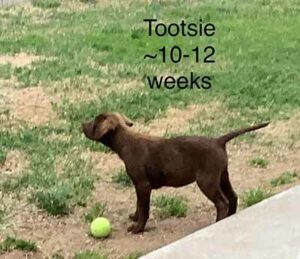Subscriber Archive
Kitties are so sweet and gentle. Well, most are. But some bite and scratch when you thought you were just having fun. Don’t swat or spray or yell. Bring out their best instead
Read MoreThis poor dog is a nervous wreck, scanning back and forth, waiting for the proverbial shoe to fall. Will a homicidal (canine-icidal) maniac blast onto the scene? Will I, the benevolent veterinarian, inflict violence on her? She has no reason to fret but anxiety is not logical. It’s an unfounded worry about what might be lurking around the next corner. If this dog panics when handled she might get defensive and, in her frantic attempts to escape, she may even try to bite. Restraint would only scare her more. An as-needed antianxiety gel, called Sileo, can be administered between her lower lip and gum. In just 20 minutes a scared dog like this can relax and adapt. Don’t let your agitated dog endure this again. Ask your veterinarian for this gentle treatment. Better still, find a veterinary staff that is trained in Fear Free handling methods. Go to Fearfreepets.com.
Read MoreMick is learning to earn the privilege of a walk. He wants to wear his new Gentle Leader head halter because he knows he’ll have a good time. He’s not quite ready to walk long distances with it. He’s still getting used to the feel of it on his face but he doesn’t have to think about it much because he’s busy working to earn reinforcers. We want him to forget it’s there. One step at a time.
Read MoreQuestion: I have two 15 year old cats who are both well toilet trained. Recently I moved from the city to the country. Since then I have been getting nightly visits from a possum, she is lovely and I hand feed her my excess veggies (avocados are her favourite). She now also brings her baby with her. The cats and the possums get on fine. However, since the baby has been coming around, there has been an ever increasing smell of what I think is possum urine. The urine smell is in the study. I now find the possums in the study and lounge quite often. Are they trying to establish their territory? What can I do to stop them peeing inside? Dr. Nichol: It is not rare for possums, notably lacking in bathroom etiquette, to ingratiate themselves into human domiciles. You are likely correct that the odor permeating your…
Read MoreDo you have a 4-legged pooper scooper? Get the lowdown on why some dogs eat stool and what you can do about this most odious habit.
Read MoreShouldn’t a cat, who’s livin’ the feline dream at your house, crave the answer to this age-old question? They do, sort of. It matters what the person wants but it’s about the cat’s needs too.
Read MoreQuestion: We were heartbroken when Oliver, our black Lab, passed after developing bone cancer. Even our 10 year old kitty Oriole got along with him. We adopted a chocolate Lab female puppy “Tootsie” who is frisky as all get-out. Life would be so peaceful if Oriole accepted her! But no! He brutalizes her, scares the h— out of her. The puppy stays safely in a cage at night but it is a constant vigil to ensure Oriole doesn’t maul Miss T. Our hope is that once Tootsie gets larger than kitty, she will stand up to him. Dr. Nichol: My condolences over your loss of good Oliver. He sounds like a gentleman. Now Oriole brutalizes Tootsie, scaring the “heck” out of her? Such salty language. You could have said the “dickens.” You are right to be concerned. The developing neural circuitry in Tootsie’s immature brain can be permanently altered by…
Read MoreQuestion: My cat is 17 months old. He is a neutered male named Woody. He is a very nice kitty but not a cuddler. He is obsessed with chewing fabric, especially cotton fabric. We have tried to keep cloth away from him. Our veterinarian has started a fluoxetine trial. What will be the endpoint? Do we try to reintroduce a piece of fabric and see what he does? We already have holes in our clothes. Dr Nichol: You are being socially responsible in getting Woody’s problem under control. Trying to explain to an arresting officer that your cat ate your clothes just won’t fly; they’ve seen and heard it all. Often called wool sucking, chewing any fabric is a true compulsive disorder of cats. It’s hereditary in “oriental” breeds like Siamese, Himalayans, and Burmese but not all of them do it. Others, including mixed bred kitties like yours, can be…
Read MoreMouthing? Teething? Playful nipping? Or is that youngster snarling and lunging? Get control now – without punishment or fear.
Read More








